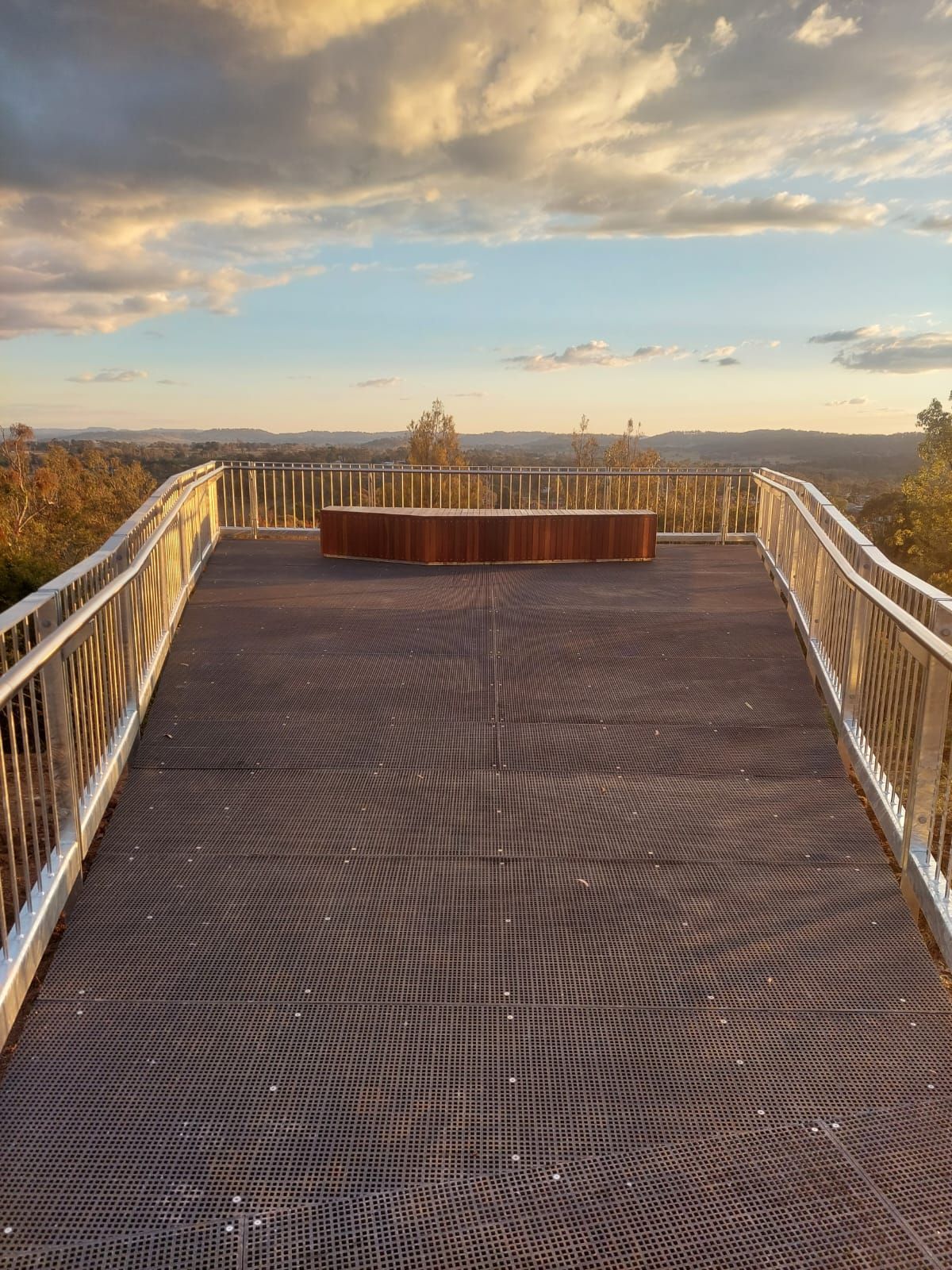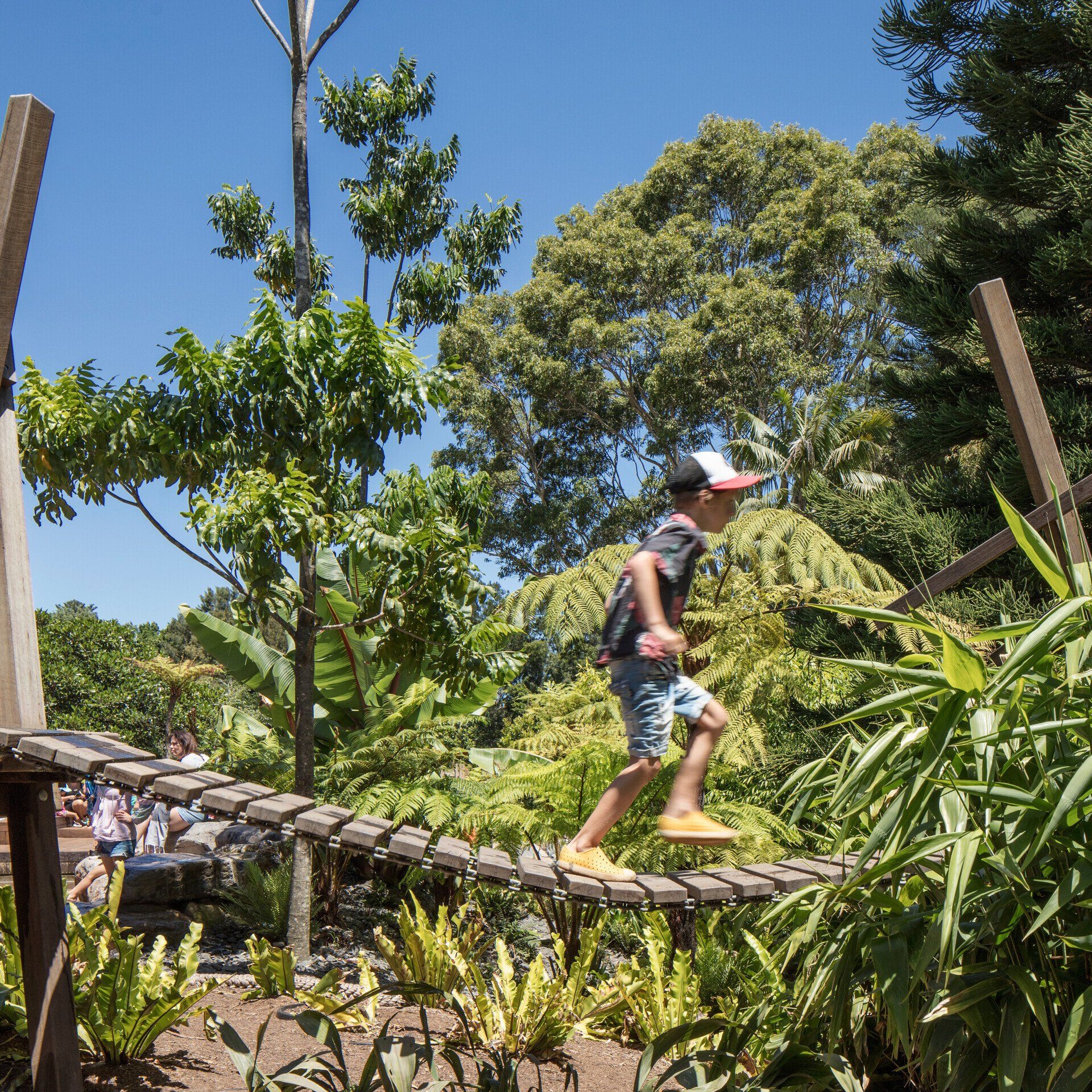Why safe structures always begin with a safe design.
Safe projects don’t just magically happen. They require experience, good processes and tireless attention to detail. They also start far sooner than many people realise, often at the initial design stage – or even before it.
Safety at every stage.
“Safety in Design is about proactively removing risks from your structure,” explains Fleetwood Creative & Technical Lead, Mark Jol. “From the moment we first see the brief, it means constantly looking over the horizon. We’re not just looking at what we can see, we’re looking at what we can’t see. We’re considering the potential risk factors at different stages before, during and after the project, and designing for them accordingly.”
This approach can have a profound impact on the safety of a structure over its lifetime. But as Mark points out, it isn’t just about reducing injuries for the people who actually use a structure. “Design can also be used to minimise site time during installation, reduce or remove the need for craneage, ensure appropriate materials that are safe and fit for purpose, allow easier ongoing maintenance and much more. Beyond making your structure safer, it can also provide more surety around the financial outcome as well. I think people sometimes forget that.”
Controlling risks though collaboration.
For an accomplished design team like Fleetwood, many risk and safety decisions happen instinctively. But as Mark points out, it’s also important to communicate why things are done in a certain way. “A common trap is to put a design out there without giving a clear explanation of the thinking behind it,” Mark says. “That can lead to confusion and second-guessing. Talking about the design with your project team and getting everybody on board is really important.”
“That’s the beauty of the pre-construction process we have here at Fleetwood,” he continues. “By working with our project managers early on, they get a deeper understanding of a structure’s design and its safety considerations. They can then transfer this knowledge out into the real world where it really matters – because if something goes wrong on-site, people can get hurt.”
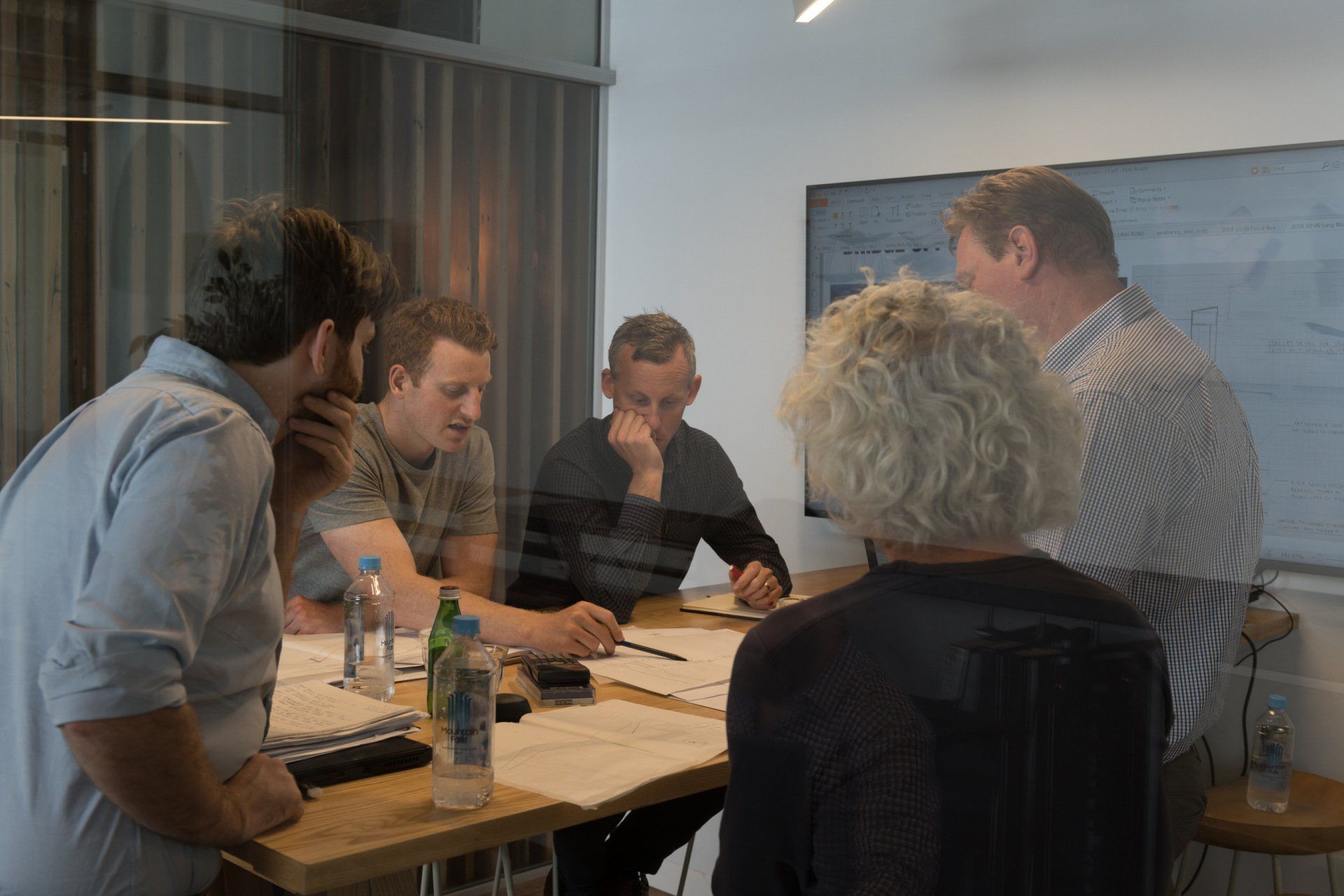
Small things, big things.
Sometimes risk factors are large and obvious. But other times they’re more subtle. “It can be simple things like trip and fall hazards, making sure all the surface products and decking we use are 100% fit for purpose,” says Mark. “For instance, if you were to use a really wide timber board that cups more than two or three millimetres, straight away it wouldn’t comply with the Australian standards for disability access.”
Materiality is another safety variable than can be easily overlooked, especially under the pressures of tight budgets and timelines. “You always have to look at the end product, how it’s going to be used and the environment it’s going to be installed into,” says Mark. “I remember a job before I started with Fleetwood, where the external designers specified Corten steel for structure than was right next to the ocean. Now, Corten is a stunning self-weathering material that protects itself, but not in coastal locations. The designers missed that completely and a few years later it was just falling apart. It wasn’t fit for purpose – and it certainly wasn’t safe.”
“Another example is using galvanised components in playgrounds,” Mark continues. “We find galvanising simply isn’t smooth enough to safely use in playgrounds with young children, so we’ve generally stopped using it, certainly in areas where kids can actually reach it.”
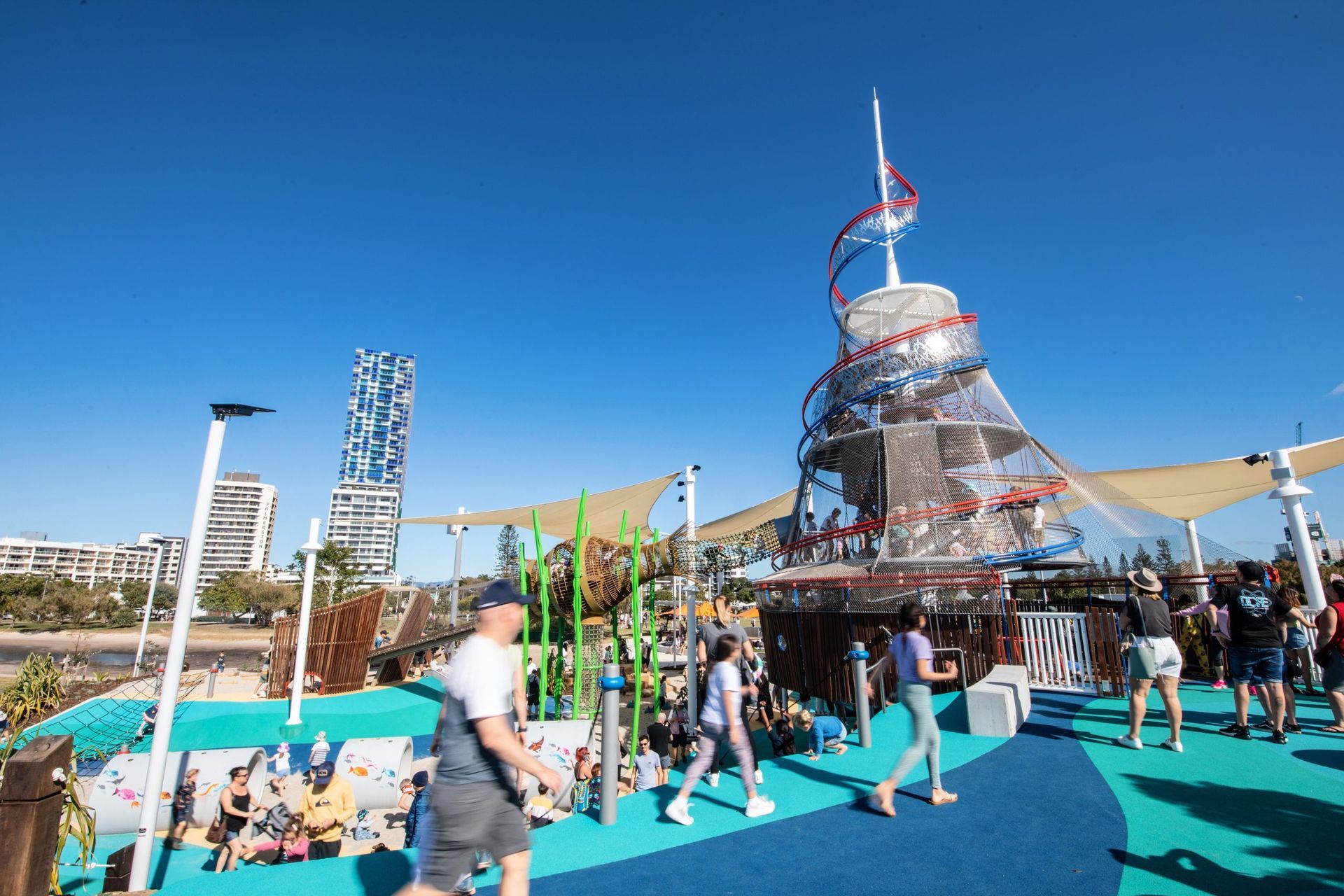
Checks and balances.
Third parties also have an important role to play in the safety of a structure. “We frequently engage private independent certifiers for that extra safety perspective,” explains Mark. “It can happen at multiple stages throughout a project from draft design right through to final handover. We’ll seek independent engineering inspections and detailed safety checks. Disability access compliance is another big area, AS 1428 has a lot of nuances, so we always get an access consultant to make sure our designs tick all the boxes and we haven’t missed anything.”
Of course, safety is about more than simply meeting the minimum standards. “Standards are an important design guide, but there’s more to it,” cautions Mark. “For example, you might be designing a new pedestrian bridge. But is it also going to be used by cyclists? Will it be wide enough? Even if you design to all the correct standards, it could still become unsafe.”
The provision of rest bays on longer pedestrian bridges and boardwalks is another case in point. “Do we actually need them (rest bays) from an Australian Standards point of view? Probably not,” says Mark. “But they can be a great inclusion so people can stop safely, without causing a hazard to themselves or other users.”
Using design to prevent crime.
Another common safety consideration is the use of lighting and CPTED (crime prevention through environmental design) measures. “Some councils insist on having lighting at night time, particularly if it’s a busy thoroughfare like a path from a local railway station,” says Mark. “But there are times when it might actually be better not to illuminate a structure, because you don’t want to encourage people to congregate there after dark.”
“CPTED is one of the biggest things we think about with playground design,” Mark continues. “For instance, making sure parents can see their children at all times, or avoiding little nooks where you can’t reach kids quickly in an emergency. Even the positioning of bathroom facilities – if the toilet door is located at the back of a structure, you don’t know who’s around the corner. You want to be able to easily see your child, so you know they’re safe.”
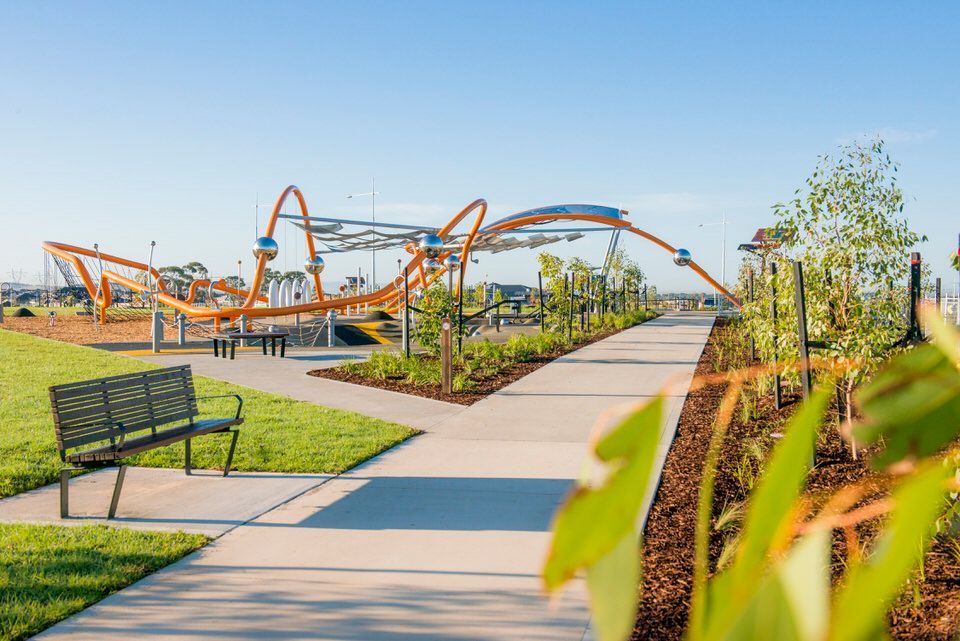

Safety vs creativity.
As someone who has built his professional reputation on ideas and originality, Mark Jol is keen to stress that creativity and safety can happily co-exist in the design process. In fact, it’s one of the things he enjoys most. “To me, that’s the exciting part of design, pushing and pulling. Yes, there’s a creative aesthetic you’re looking for,” he says. “But will it stand the test of time? Will it be affordable? Will it be easy to look after? Will it be safe? That’s why you engage experienced design teams you can trust.”
“Someone once told me, ‘Mark, if it doesn’t look safe, you can bet your bottom dollar it isn’t, so always check, don’t assume anything’. It was great advice. We have a duty of care as designers and we take that duty very seriously at Fleetwood. The structures we create will be used by thousands of people, often for decades to come, so you have to keep that in the back of your mind at all times – and we do.”
What are the safety implications for your next project?
At Fleetwood, we understand that safety is paramount to every project success, no matter the location, scope or size. Our team is committed to implementing and promoting safety measures and best practices throughout the project life cycle, protecting everyone involved including those that ultimately use it once it has been delivered.
So, for your next project, partner with Fleetwood and experience the peace of mind knowing that safety will be top of mind at every stage, while delivering excellent outcomes. Get in touch with us today, and let us help you achieve your project goals while prioritising safety first.
Get in touch.
We recognise that each project is unique and requires a tailored approach. Whether you're looking to build a bridge or boardwalk, shade or play structure, we are here to help.
Contact us today to explore the possibilities for your project. Our team of experts will collaborate with you to create a solution that can make your project vision into a reality!
More from Fleetwood Files.
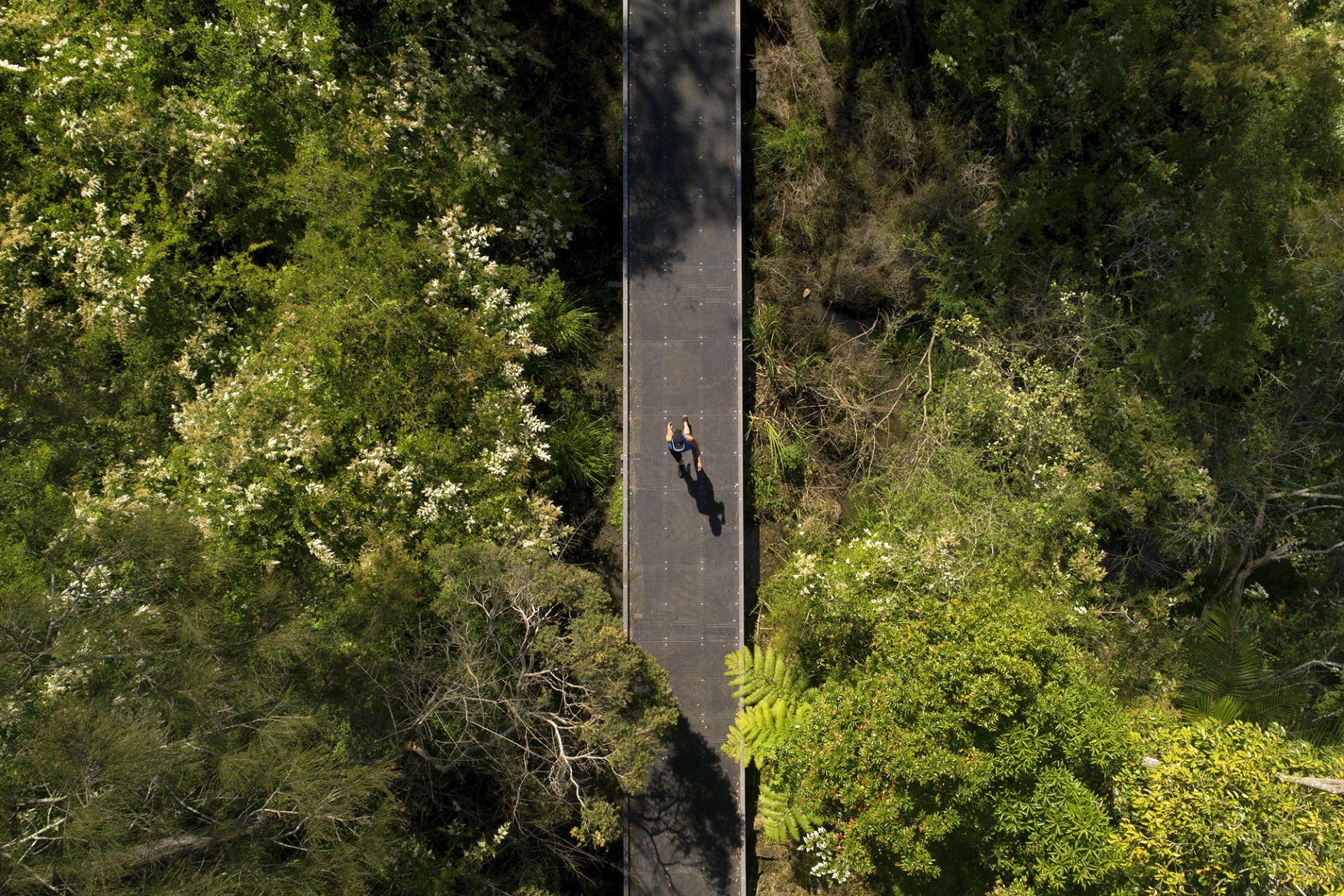
Explore
Certifications
Environmental Management : ISO14001
Quality Management : ISO 9001
OHS Management : ISO 45001
All Rights Reserved | Fleetwood Urban | Privacy Policy


